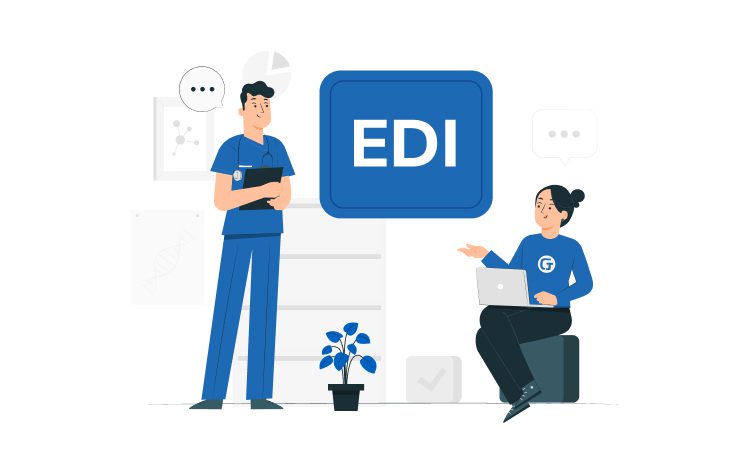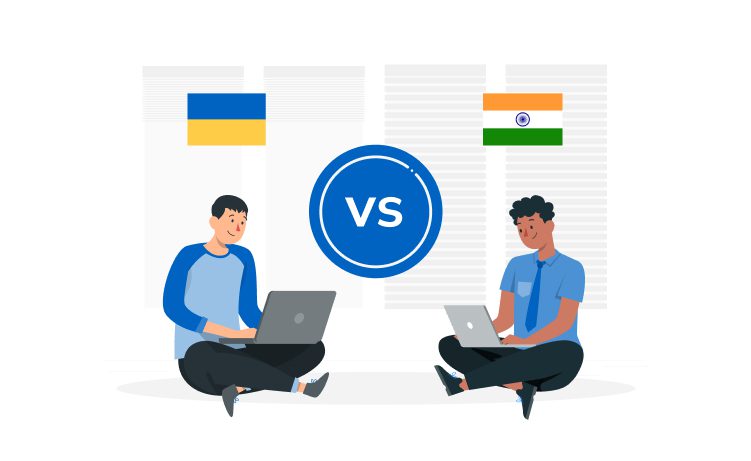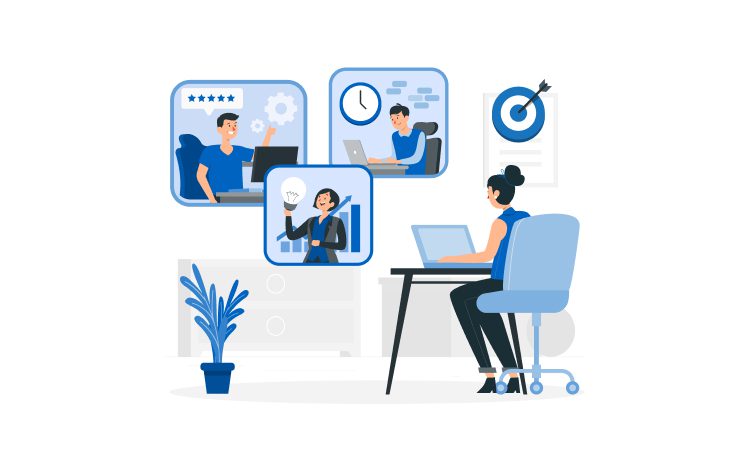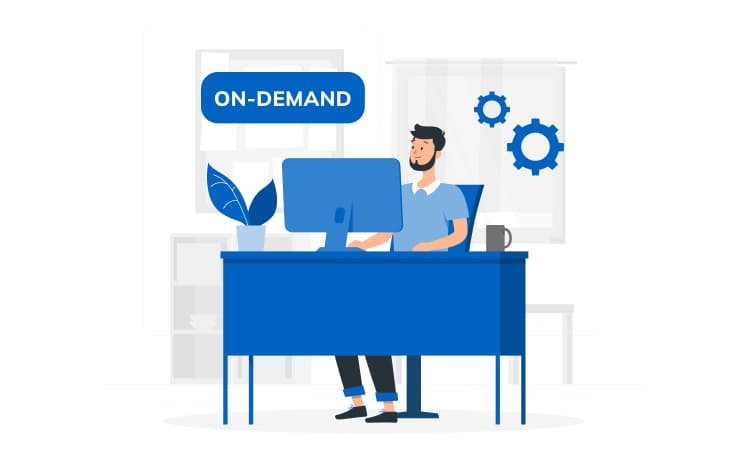
Top Mobile App Development Trends That Will Shape the Industry’s Future



In the first quarter of 2021, approximately 3.48 million apps were available on Google Play, making it the largest digital store ever.
The Apple App Store was the second biggest platform with around 2.22 million software products. In 2025, the number of mobile applications will grow exponentially.
They are needed to manage fitness trackers and track health during a pandemic. In this article, we’ll look at 12 mobile app development trends 2021-2025 and their impact on daily life.
Content
According to Gartner’s forecast, global revenue from artificial intelligence (AI) software will amount to 62.5 billion dollars in 2022, which is 21.3% more than in 2021. AI will be used in virtual assistants, autonomous vehicles, knowledge management, digital workplaces, and crowdsourced data.
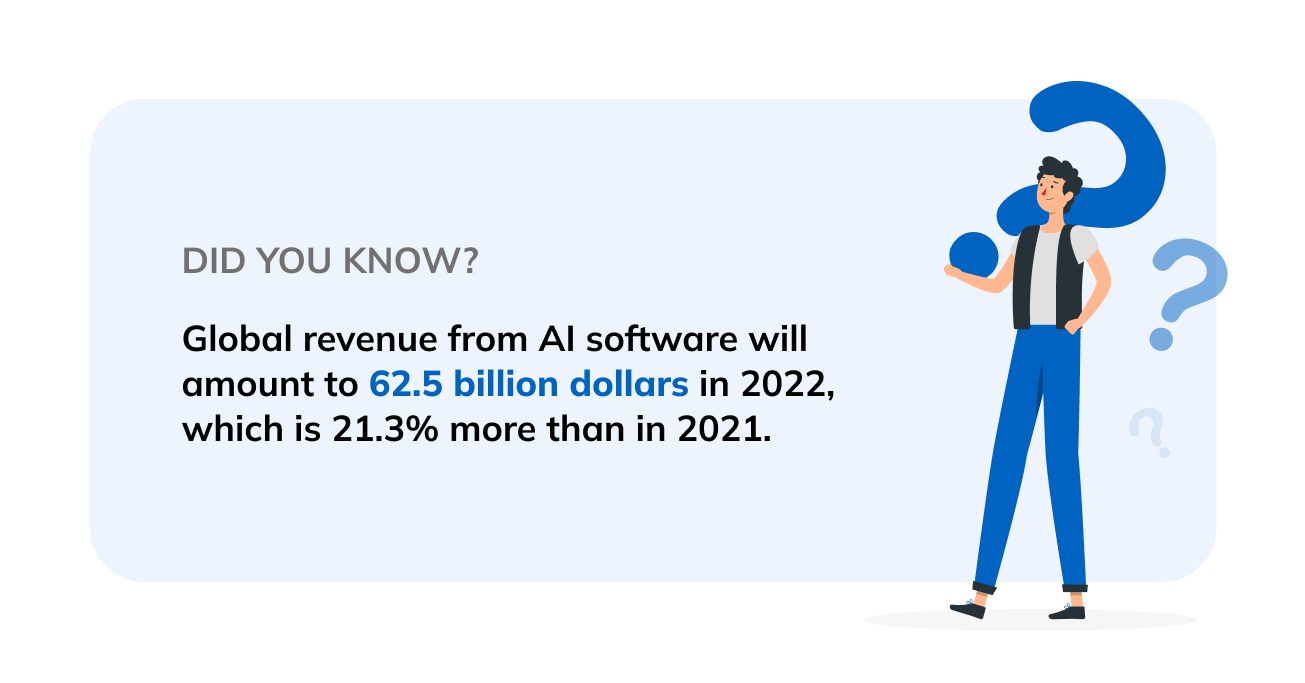
AI capabilities for mobile applications:
AI transforms entire software development, from the backend to the user interface.
According to ResearchAndMarkets forecasts, the global 5G infrastructure market will grow from $12.9 billion in 2021 to $115.4 billion by 2026.
The number of manufacturers and smartphones continues to increase. So, Samsung launched its first 5G mobile devices in 2019, and Apple developed the iPhone 12 product line in autumn 2020.
By the end of 2021, 5G smartphone shipments will account for 40% of the global volume and may reach about 69% in 2025.

When choosing wireless technology, consumers expect increased mobile data rates and available remote areas. Ericsson predicts that 5G smartphone subscriptions worldwide will surpass 1 billion in 2022.
Virtual reality games in HD, remote patient diagnostics and operations, and e-health are possible with wireless technology. The applications of the next decade will actively use the peak data rates (several Gbps) and the power of 5G technology.
In 2025, smartphone software products will introduce AR and VR functions for various purposes.
So, educational simulations will use immersive technologies in the healthcare sector; real-time remote assistance, instructions, and feedback for employees will become popular in the manufacturing sector; and immersive learning will be applied in the education sector.
Statista forecasts that the augmented reality (XR) market will reach $30.7 billion in 2021 and grow to almost $300 billion by 2024.
Consumer behavior is transforming along with the change of generations: from boomers to millennials and Gen Z. New Internet platforms are emerging, and the market is moving to the online space.
So, more than 2.14 billion people worldwide purchase goods and services on the Internet today in 2021. The reasons for choosing online are affordable prices, fast orders, holiday discounts, and fair product reviews.
Marketplaces and online stores duplicate the assortment in mobile applications, engaging users to switch to multifunctional smartphone interfaces.
In October 2021, Meesho Online Shopping became the most downloaded shopping app on the Google Play Store with 19 million downloads. The second most popular software product in the world is SHEIN, as it has 12 million users.
Read more about the top mobile app development companies.
“Clamshell phones” are coming back to the global smartphone market in a modern interpretation. Statista predicts that international shipments of foldable phones will grow from 3.2 million units in 2019 to 50.1 million devices in 2022.
Users can adjust the screen size: enlarge or shrink by folding/unfolding. For example, set the alarm on a folded device, and watch a Netflix series on an extended screen.
Samsung, Huawei, Xiaomi, OPPO, TCL, and other global smartphone manufacturers have presented and announced many new products over the past 3 years.
So, in 2021, Samsung released two new smartphones: Galaxy Z Fold3 5G and Galaxy Z Flip3 5G. As of April 2021, OPPO has released 2 foldable phones, and Xiaomi has launched a foldable phone Mi MIX Fold.
Mobile app development considers the features of such devices. Digital products must be multi-window display compatible, maintain the user interface, and support configuration changes. Applications are tested in the Android Virtual Device Manager (AVD) Android Studio.
Multi-platform development is used to create entertainment software and test versions of IT products. In 2021, gaming apps became the most popular category, accounting for 21.5% of all available options for iOS.
The cross-platform is suitable for writing simple software solutions with several screens and common elements for different operating systems. The main advantage of the multi-platform approach is the high speed of creating applications and small investments of time and money.
For example, solutions for browsers such as websites, online text and graphics editors, social networks, and chats are cross-platform technologies.
Specialized tools and frameworks are used in the development: React Native, Flutter, Ionic, Xamarin, PhoneGap, etc. The process implies a native element included in the base project for XCode or Android Studio.
Many IT pros choose Flutter to quickly create a minimum viable version of a product (MVP). Overall, about a third of mobile developers use cross-platform technologies and frameworks.
Real-time health tracking has become a vital feature during the pandemic. Apple, GOQii, Xiaomi, Fitbit, and Nike have introduced smartwatches and apps for them. According to IDC, global wearable device shipments reached 153.5 million in the fourth quarter of 2020, up 27.2% from 2019.
IOS and Android app developers have to build compact apps that support contactless payments and use GPS, 5G, and BLE technologies. Smartphone apps connect to wearable devices, displaying indicators of activity, sleep, blood glucose, stress, etc.
The development of software products for fitness trackers will be in demand in 2025. The popularity of applications directly depends on the development of wearable devices in the world.
So, spending on smart bracelets, smart clothes, and smart patches will amount to more than $90 billion by 2022, and more than 1 billion such devices will be used worldwide.
Mobile products are projected to generate more than $935 billion in revenue in 2023 with paid downloads and ads.
In January 2019, King, Supercell, and Bandai Namco Entertainment were the most profitable mobile game developers on the Google Play Store, with app revenues of over $40 million each.
In 2021, digital products from the gaming industry have become the most popular entertainment category for iOS.
There are many innovative features that attract users, e.g., manufacturers use augmented reality technology that allows them to see characters with specialized glasses.
On-demand apps help users to order goods or services. For example, Uber, Airbnb, and other software solutions in logistics, food, and housing.
The largest segment of the industry is platform-to-consumer delivery, with market size of $148,358 million in 2021. Statista predicts that the number of online food delivery users will reach 2,638.1 million by 2025.
According to Statista, 45% of executives said their companies are increasing information security using blockchain. Also, in 2021, the technology is primarily used in digital currencies (Bitcoin and Ethereum) and asset tracking and management.
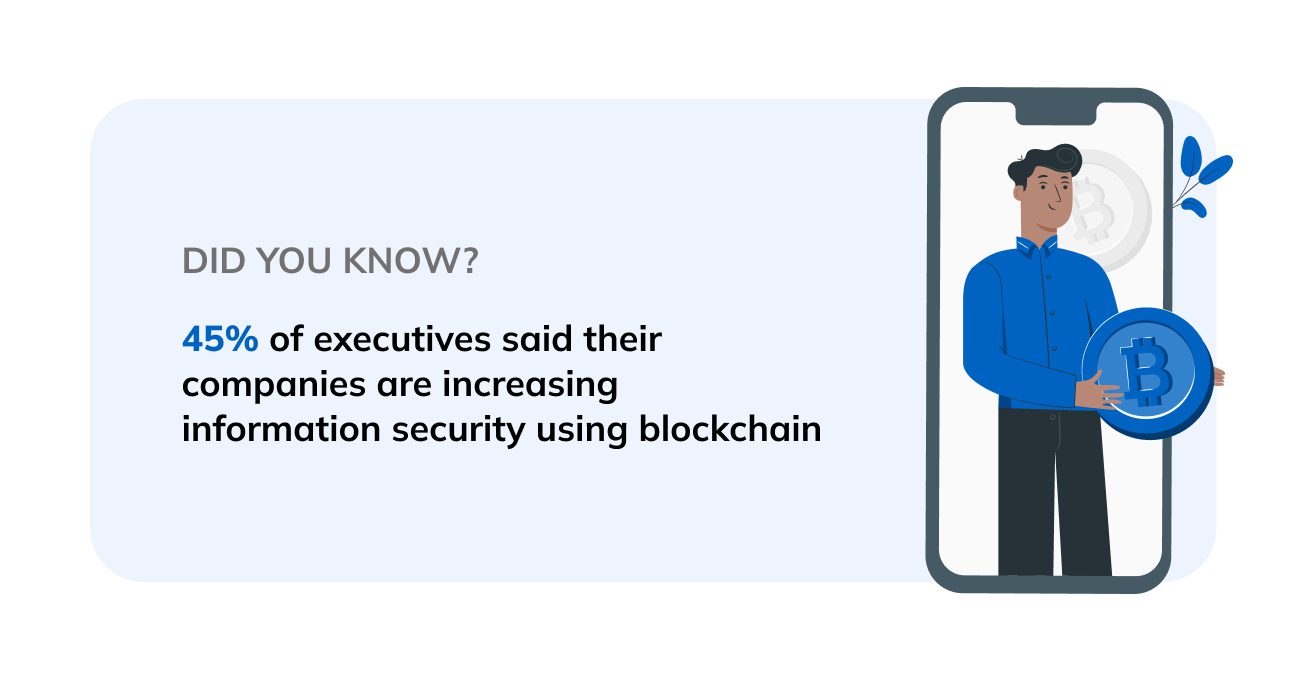
Blockchain applications are widely spread in healthcare. They provide access to the patient’s medical history and doctor’s records and allow constant communication between the subjects of medical services.
Application interfaces are designed adhering to GDPR and HIPAA principles to ensure medical data security.
Transporting medicines is easier with smart contracts. It is monitored on mobile and web platforms that track pharmaceuticals and transmit data to multiple parties simultaneously.
Contactless payments are becoming a necessity during the COVID-19 pandemic for both buyers and business owners. By 2022, more than 1 billion consumers will use three e-wallets: Apple Pay, Google Pay, and Samsung Pay.
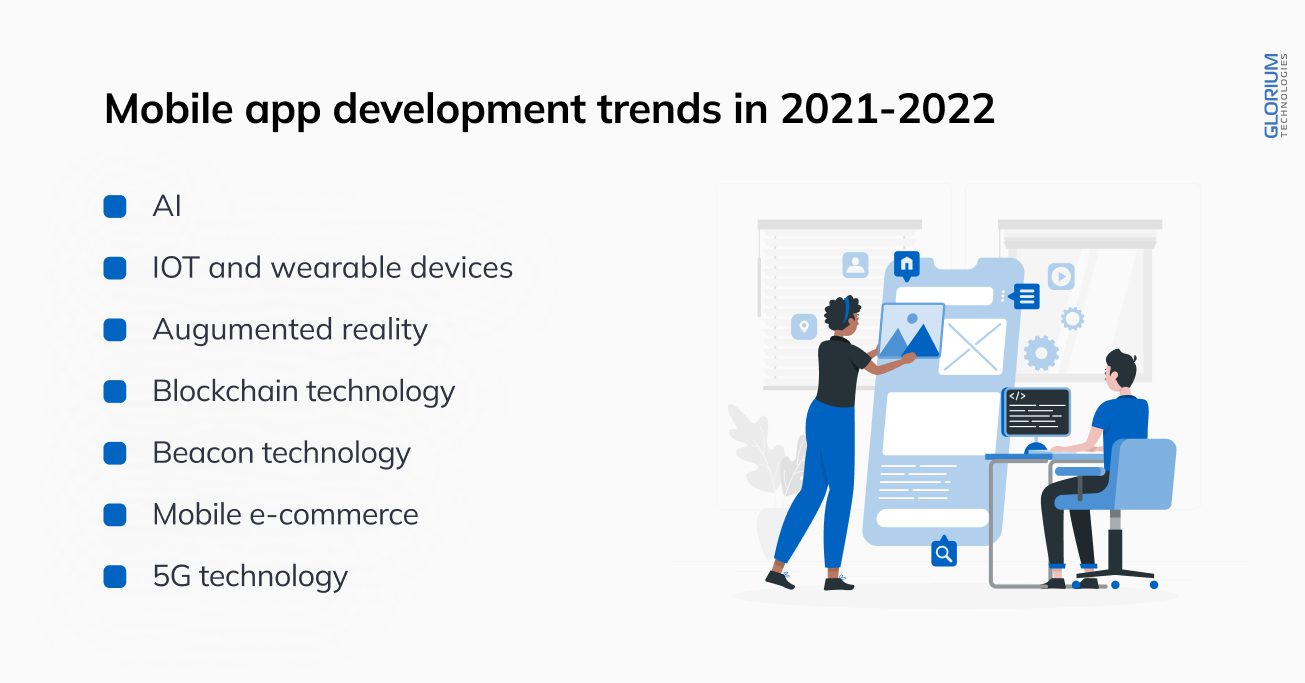
Every week, 11% of online customers worldwide buy things using their smartphones. They use mobile apps from banks and developers as well as built-in NFS technology for payments.
Next-generation consumers demand fast, secure, and hassle-free ways to conduct transactions, so technologies like mobile wallets, contactless payments, and other solutions are becoming popular.
According to a Worldpay Global report, transactions from mobile or digital wallets were about 40% in 2020. By 2023, they may exceed 50%.
Statista predicts the global market value of beacon technology will reach approximately $56.6 billion in 2026, up 59.8% from 2016. It is gaining more and more popularity and will become a mobile application development trend in 2025.
The main innovation during the pandemic was a contact tracing app launched by Google and Apple. It uses Bluetooth technology to send out coronavirus alerts.
Progressive Web Apps (PWA) take less time to design but are quite convenient. Most of them attach to smartphone home screens. They enable consumers to purchase products through devices, connections, or even operating systems.
For example, Starbucks PWA operates offline but still provides users with ordering and menu browsing functions. Uber PWA allows customers to book cars with a low 2G network in 3 seconds.
According to Statista, about 9% of ecommerce CEOs said they plan to invest in WPA in 2021. The software solutions do not depend on Internet access and provide fast download speeds. They do not impact phone memory since they usually are smaller than 1 MB.
PWAs are developed with HTML, CSS, and JavaScript. Digital hybrids provide location access, Bluetooth connectivity, and background and toast notifications. Users can try the app in the Google Play Store without installing it.
Modern smartphones use several technologies at once. For example, foldable devices combine immersive viewing and fifth-generation high-speed wireless technology. 5G opens up new opportunities for IoT and XR application development.
Wearable bracelets with a BLE beacon help track the spread of viruses by transmitting data to apps on smartphones. A multi-platform approach is essential in the gaming industry and is complemented by XR technologies.
A trusted development partner can help you create standalone and unique software with advanced features. Glorium offers unique solutions tailored to meet all the client’s requirements.
The trends are foldable devices, Beacon, AR, 5G technologies, instant applications, IoT products, artificial intelligence algorithms, mobile payments, and blockchain.
In 2023, the number of mobile developers on iOS and Android will increase. Global demand for IT products for business optimization and mobile sales development will be the main factor influencing the demand for specialists.


